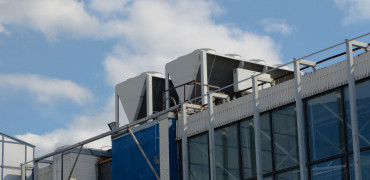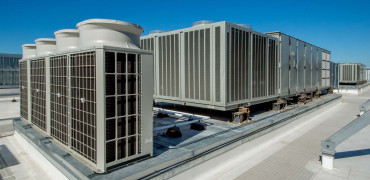The national goal of achieving net zero carbon emissions by 2050 is a significant challenge and one that all sectors from transport to industry and the built environment must engage with.
The Net Zero objective means that government has been undertaking some in-depth consultations on legislation that impacts buildings.
This includes updates to Part L of the Building Regulations (dealing with energy conservation).
The intention is to introduce an ‘interim’ update of Part L in 2021, followed by a full update in 2025.
This incremental approach reflects the major uplifts for targets such as energy efficiency and carbon emissions that we can expect to be introduced for the built environment over the next few years.
Government wants building designers, operators and owners to start taking on board these higher targets as soon as possible – rather than facing a steep learning curve down the line.
This not only helps achieve more energy efficiency overall, it also reduces the risk of equipment failure – and extends its lifetime
Minimum standards
One example is the consultation on the Minimum Energy Efficiency Standards (MEES) for commercial buildings (non-dwellings).
MEES were introduced around 10 years ago, so commercial landlords have had some time to get used to the system.
Currently, landlords cannot lease a building to a new tenant if the building has an EPC (Energy Performance Certificate) rating of less than E.
However, the proposals on the table now are set to put more challenging targets in place.
Firstly, government is proposing that commercial buildings will have to achieve a minimum EPC of C from April 2027.
Furthermore, the proposal is that just three years later in 2030, the minimum EPC will rise to a B.
The government estimates that this proposed change to the EPC ratings requirements will include around 85% of the non-domestic rented building stock (about a million buildings).
This is a significant increase from the 10% of the stock covered by the current MEES requirements.
Estimates are that the change should deliver 10.3TWh in energy savings by 2030.
Valid certification
Another important element of the proposed updates is that landlords could be required to present a valid EPC two years before the enforcement date for both of these targets.
So, landlords will submit their current EPC to an online database, and this will ‘start the clock’.
If that does not show an EPC rating of C or higher, the landlord will then have a clear time period in which to undertake improvements to achieve that level.
There can be no doubt that landlords will be looking closely at the energy performance of all aspects of their buildings.
This includes building services such as air conditioning, which can be significant energy users.
Critical benefits
At Mitsubishi Electric, we believe that good service and maintenance practice is critical for optimising energy efficiency.
Even if a building achieves an EPC of C, the shift to a B rating is challenging – particularly if the ‘low hanging fruit’ of energy efficiency measures, such as switching to LED lighting has already been carried out.
Good maintenance practice and the application of technology such as remote monitoring can help to achieve smarter energy consumption, and reduce the running costs of equipment such as chillers, for example.
Not only does this help to achieve a more energy efficient building overall, it also reduces the risk of equipment failure – and extends its lifetime.
As building owners face tighter regulation on energy use, it’s important to view service and maintenance as a key part of your energy efficiency strategy.
Geoff Turton is Head of Service, Maintenance & After Sales Technical




